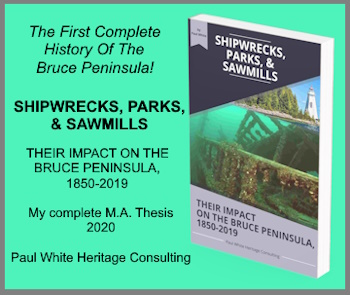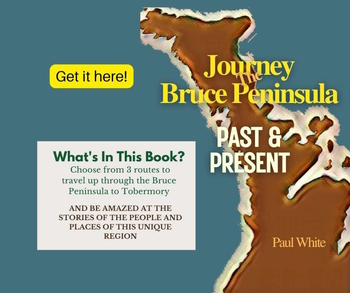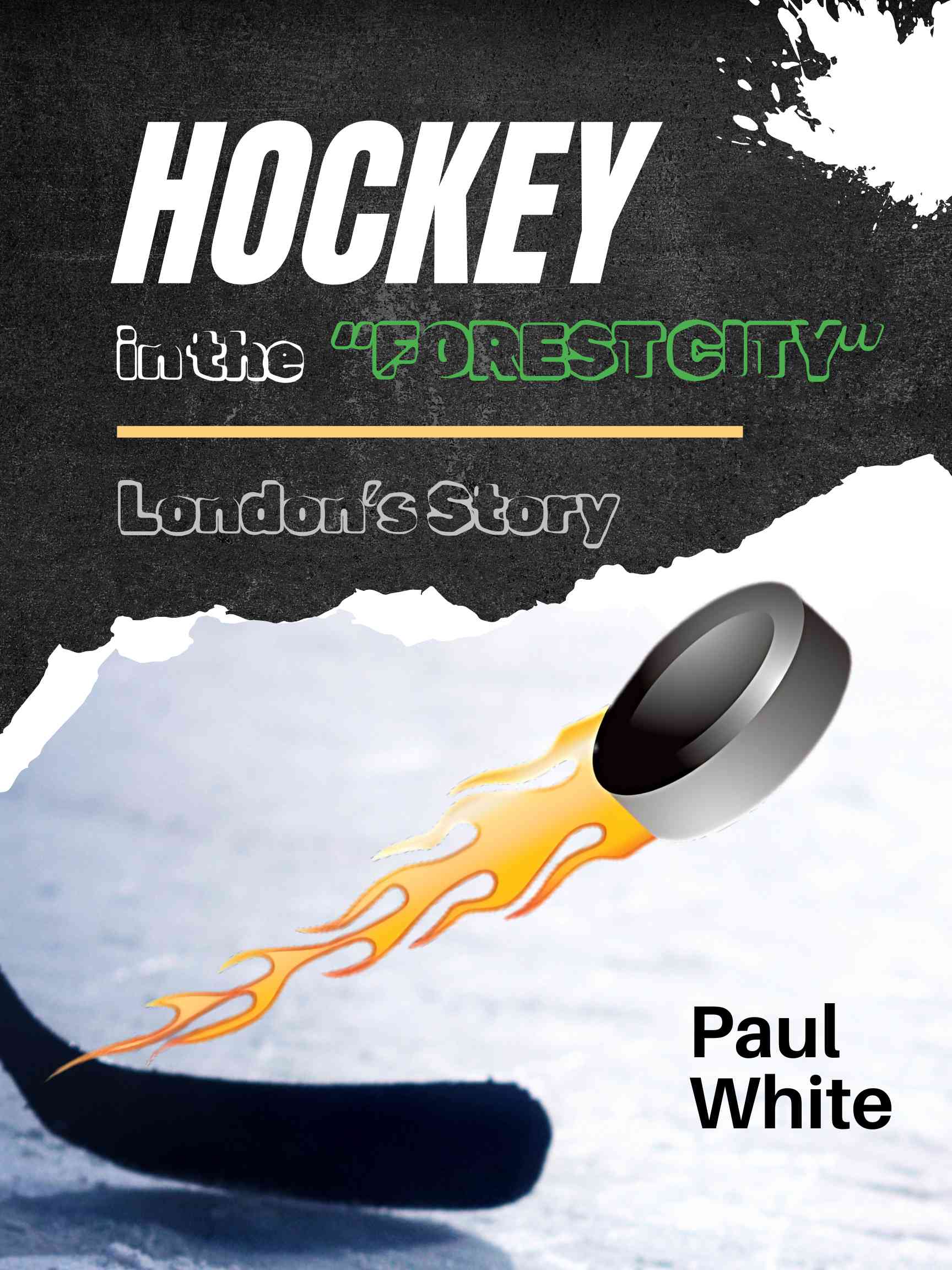Sauble Beach:
Canada's Daytona Beach
Sauble Beach Ontario has seen it all. A fishing outport; a sawmilling centre; and an internationally acclaimed tourist resort area!
A short drive west from Owen Sound on the Lake Huron shoreline lies one of Canada's favourite vacation attractions, Sauble Beach. Contrary to teenage mythology, the first non-natives to discover the sandy beaches were possibly French explorers — not teenagers from all over Ontario looking for a place to party on the May 24 holiday week-end!
In the 1950s, promoters called Sauble
Beach the “Daytona Beach
of Canada”. However, this popular tourist destination owes its beginnings, not
to its miles of sandy beach which is perfect to rent a cottage for beach
holidays, but its location at the end of a much-used pioneer travel route.
Sauble Beach History
Long before the first settlers arrived, native travelers looking for a shorter and safer route between Lake Huron and Georgian Bay, would cross the peninsula near its base. They would enter near the site of the present-day location of Wiarton. After portaging, they would paddle their canoes across the lakes and rivers that almost connect both shores. The route became known as the Rankin Portage. It is suspected that French explorers used this route to visit the various native communities, which existed in the area, to avoid the often-treacherous waters around the tip of the peninsula.
The last portage on the route was around a waterfall near the Lake Huron coast. The French explorers named the river, “La Riviere au Sable”, which translates to “the river to the sand”. This name continued until 1881, when a mapmaker, perhaps inadvertently, marked the river with the name “Sauble.”
The first non-natives to spend the summer in the Sauble Beach area were probably fishermen who set up camps to process their catches. However, the 1860s marked the beginning of more permanent commercial enterprises in the area. One of the first sawmills on the peninsula was built at Sauble Falls in 1862. Soon after, a boarding house and general store were built nearby. It is likely that both enterprises existed to accommodate the needs of not only the lumbermen, but the commercial fishing fleets as well.
Pioneer Tourism
The 1880s marked the beginning of the era of tourism in this part of Ontario. It was not long before tourists seeking a break from the hot summer weather in the cities discovered the cool breezes, sandy beaches, and refreshing water of the Sauble Beach area. Many of these early visitors pitched huge tents, large enough to shelter whole families, while others built rough-hewn shelters to enjoy beach holidays.
The arrival of the Grand Trunk Railway to Hepworth, and then Wiarton, facilitated easier travel to Sauble. The trip was an adventure. The tourists left the train in Hepworth, and after lunching at John Downs’ Royal Hotel; they boarded horse-drawn wagons, called democrats, and made their way along rough trails to Lake Huron's sandy shores.
Soon families from southern Ontario, particularly the London area, were flocking to the beach. The original rough-hewn cottages and tents gave way to more permanent structures. At first, most of the tourism activity was located around the mouth of the river. However, the introduction of the automobile enabled more tourists to discover this summer paradise. Consequently, it was not long before cottages and tents were located along most of the length of the beach.
In 1925 a London surveyor, by the name of Archibald, purchased the western parts of farms owned by J.K. Davidson, John Walker and Sam Bannister. The land was surveyed into lots and put up for sale. In 1926 the first cottage on this development was erected.
Throughout the 1930s and 1940s, Sauble Beach continued to grow and rival other Ontario tourist destinations such as Wasaga Beach and Muskoka. Today, Sauble Beach is a booming centre for tourism, known throughout Ontario and the northeastern United States, for its great sandy beaches, clean fresh water and cool breezes. The same features which attracted the first tourists to the area more than a century ago.
For more great stories about he history of the Bruce Peninsula check out my book Journey the Bruce Peninsula Past & Present it makes a great travel companion as you travel this unique part of Canada's Great Lakes region.
Discover More About the Bruce Peninsula
Getting to the Bruce Peninsula is a relatively easy driving trip. Here are driving directions from three regions to the peninsula.
Bruce Peninsula Lumber History details the impact of the forest products industry on the development of the region.
Bruce Peninsula Lumbering provided the stimulus to develop and grow the pioneer economy on the newly settled Bruce Peninsula.
Bruce Peninsula Municipal Politics: No matter what the venue, or the issue, seldom is a popular decision made that suits everyone.
Bruce Peninsula Travel Routes were often a matter of debate because in the early years, land travel was virtually unattainable for settlers and lumbermen alike.
Bruce Peninsula winters could be difficult, especially in pioneer times when transportation connections were limited to only a few months each year.
Colpoys Bay Vista - Awesome! A short drive from either Wiarton or Owen Sound is one of the most magnificent views to be found in the province of Ontario!
Forest Products on the Bruce Peninsula contributed greatly to the growth and development of that region of the province of Ontario.
Gillies Lake: aka Ghost Lake has a mysterious past as its original name, Ghost Lake, implies.
Great Grey Owls on the Bruce Peninsula was a surprise discovery for ornithologists and others. Sadly, the story of their visit had an unfortunate conclusion.
Pioneer Campers: Hope Bay mostly considered the peninsula untamed wilderness and some of the locals were not about to disappoint them!
Pioneer Missionary James Atkey arrived on Colpoys Bay to minister to the native community near Oxenden until a treaty uprooted his parishioners.
Pioneer tourists first visited the Bruce Peninsula in the 1800s and the region continues as a great recreational and tourism destination today!
Pioneer Vacations on the Bruce Peninsula got an eerie start in the Hope Bay region of the peninsula.
Lighthouses Lighthouses were vital to Georgian Bay Sailing.
A Flowerpot Island cruise is not only entertaining, but it is also very educational as you will see things that you have never viewed before!
Travel the Bruce: Owen Sound to Wiarton A wonderful journey from Owen Sound to Wiarton.
Travel the Bruce: Wiarton to Tobermory Relaxing and historic journey.
Bruce Peninsula The Bruce Peninsula is a compelling place, with a rich history, to visit. Once you have traveled there, we guarantee that you will return, again and again!





